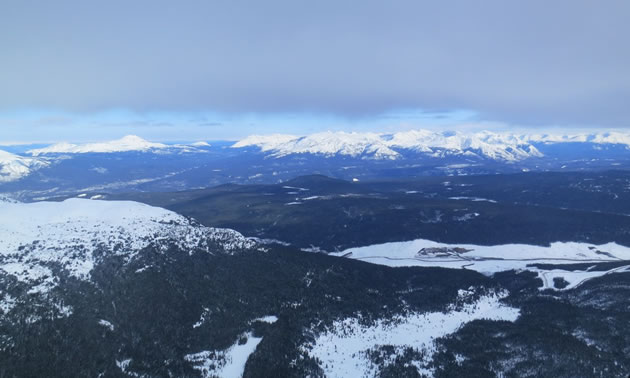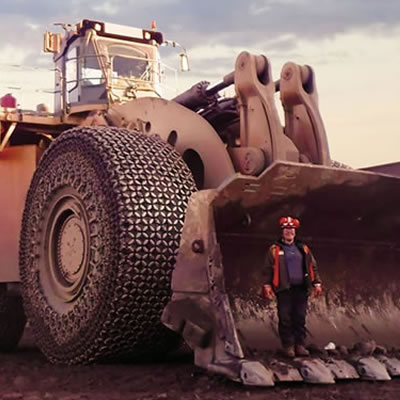Colorado drills 188 meters of 0.41 g/t Au and 0.32% Cu extending mineralization at North ROK

Aerial view of the North ROK Project in northwestern British Columbia. — Photo courtesy Colorado Resources Ltd.
WEST KELOWNA, British Columbia, Jan. 18, 2018 (GLOBE NEWSWIRE) -- COLORADO RESOURCES LTD. (TSX-V:CXO) ("Colorado" or the "Company") is pleased to report the results of its 2,529.4m six drillhole program on the Mabon Zone at its 100% owned North ROK Project. North ROK is located between Imperial Metals Red Chris Mine¹ and the village of Iskut in northwestern British Columbia. The diamond drilling program was completed in late November (see news release dated November 21, 2017) and was primarily targeting mineralization at depth and to the west of the known 2014 Inferred Resource².
Porphyry copper–gold style mineralization at the Mabon Zone has been outlined by Colorado between 2013-2017 over apparent widths of up to 200m, along strike for a minimum of 600m and down to a depth of 500m. Mineralization is primarily hosted within the northwesterly trending Mabon intrusive stock and may also be noted in the enclosing volcanic and sedimentary rocks. The Mabon Zone is the only area of 7 porphyry copper-gold targets, within a 3.0 x 9.0km northwesterly trending prospective corridor, that has seen any substantial drilling.
Adam Travis, President and CEO of Colorado Resources states: “The 2017 drillholes at North ROK principally targeted areas outside of the 2014 North ROK Inferred Resource² and were successful in returning significant copper-gold intersections on broadly based step outs beyond the limits of this resource. In addition, our improved understanding of the geometry of the North ROK mineralized zones will allow us to continue to target not only extensions to the Mabon mineralized zone but also the many other occurrences associated with similar intrusive phases within the broader ROK–Coyote property. Colorado Resources will continue its technical review of these results and its broader implications for the North ROK project. We will also continue our dialogue with the Tahltan First Nation and related stakeholders in the Iskut area and look forward to further development of a productive, equitable and respectful working relationship with these groups.”
Drillhole NR17–035: This borehole targets an untested volume of rock approximately 200 to 350m vertically below a 2013 drill hole, DDH NR13–004. The borehole intersects a well mineralized monzodiorite from 329.4 to 383.4m and from 443.8 to 631.7m. A lower grade late mineral dyke, or volcanic inclusion, cuts the broader mineralized interval and forms a lower grade interval between 383.4 and 443.8m. Strongest gold grades are associated with sheeted grey-quartz-orthoclase veins (see Table 1 and Figures 1 & 2).
Drillhole NR17-036: This drillhole tested a fault window between two 2013 drillholes NR13–013 and NR13–009. The borehole cores a weakly mineralized monzodiorite from the collar of the drillhole to 116.05m where it enters a sequence of intensely pyritic crystal tuffs and sediments. Much of the mineralization within this drillhole is hosted within the tuffs which form the northeast contact of the Mabon stock. In the sediments the best copper-gold mineralization is associated with sheeted pyritic veinlets with strong chloritic selvedges. This is a non-typical site for copper-gold mineralization within the Mabon mineralized environment and suggests that mineralization within the enclosing sediments may be more common than previously believed (see Table 1 and Figure 1).
Drillhole NR17–037: Drillhole NR17-037 was testing for the up-dip extension of mineralization noted in historical drillhole NR14-031. Mineralization is cored from the collar to 21.0m, with copper-gold ratios shifting strongly in favor of gold. If this zone is linked to the historic intersection in NR14-031 than it will have a shallow northeast dip which may leave this zone untested to the southeast (see Table 1 and Figure 1).
Drillhole NR17-038: NR17-038 was drilled approximately 200m below the trace of DDH NR14-005. Much of the monzodiorite intrusion cored below 368m is mineralized with broad zones of moderate copper-gold mineralization separated by short, lower grade intervals. Strongest copper-gold mineralization within this drillhole is associated with well developed magnetite potassium feldspar breccias. Very significantly, relative to DDH NR13-005, mineralization within the host monzonite–monzodiorite intrusions is flaring to the northeast, at depth, with a significantly larger mineralized interval cored in NR17-038 than that cored in NR13-005 located approximately 200m above the trace of NR17–038 (see Table 1 and Figure 1 & 3).
Drillhole NR17-039: This drillhole was collared approximately 125m north of NR17-037 testing for mineralization tracking a northwest striking, Induced Polarization (I.P.) anomaly. The drill hole failed to return significant results with only minor copper-gold zones associated with intense QSP alteration encountered (see Table 1 and Figure 1 & 3).
Drillhole NR17-040: NR17-40 was drilled approximately 500m northwest of the main resource area, and approximately 200m to the northwest of NR13–024. The drillhole tested an I.P. anomaly beneath 40m thick till cover. A 32m wide mineralized zone is cored on-strike with the dominant Mabon trend and is associated with well developed, magnetite-potassium feldspar and chlorite breccia’s.
Qualified Person
Dr. Jim Oliver, Ph.D, P. Geo., the Company’s Chief Geoscientist, is the Qualified Person as defined by National Instrument 43-101 who reviewed the preparation of the technical data in this news release.
QA/QC statement on Assay Results
Colorado inserts certified standards, blanks, and field duplicates consisting of half core samples into each batch of samples at regular intervals. The 2017 samples were analyzed by ALS Global of Vancouver, British Columbia. Samples are prepared by crushing the entire sample to 70% passing -2mm, riffle splitting of 1kg and pulverizing the split to better than 85% passing 75 microns. The core samples also undergo a robust duplicate assay program that tests rejects and pulps for reproducibility. Samples are also sent to an umpire lab.
The gold assays are determined by Au-AA25 fire assay method which reports in parts per million (ppm) (equivalent to grams per tonne (g/t)). Any samples greater than 5.0g/t gold are analyzed by Au-GRA21 fire assay method with a gravimetric finish.
Base metal assays are first determined using the ME-ICP61 method, which reports results as part per million (ppm). All analyses that reach the overlimits of ME-ICP61 are reanalyzed with an Ore Grade method. The analytical results are verified with the application of industry standard Quality Control and Quality (QA/QC) procedures.
About Colorado
Colorado Resources Ltd. is currently engaged in the business of mineral exploration for the purpose of acquiring and advancing mineral properties located in the “Golden Triangle” British Columbia and holds approximately 1,200 sq km of mineral claims in the Golden Triangle. The Company’s main exploration projects within British Columbia include KSP and North ROK. Additionally the Company holds an option to acquire a 100% interest in the Greensprings project located in Nevada.
On behalf of the Board of Directors of
Colorado Resources Ltd.
“Adam Travis”
Adam Travis
President and Chief Executive Officer




